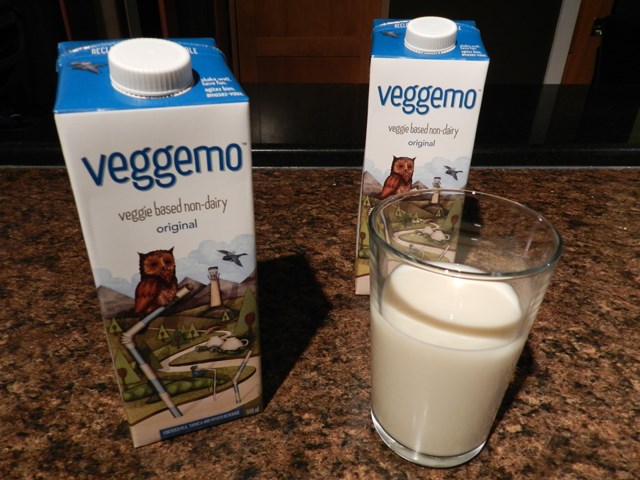What do peas, potatoes, tapioca and yoga pants have in common?
According to a Richmond-headquartered beverage maker those four ingredients could be helping fuel a trend away from the consumption of dairy products.
How?
Global Gardens Group Inc. has developed and started selling what they say is the world’s first dairy alternative drink made using vegetables. Called Veggemo, it hit grocery store shelves last November and is now in about 1,000 stores across the country, said Wade Bayne, a former McNair grad in the mid-1980s who is Global Gardens’ vice president of marketing.
Bayne said the growing move away from dairy is a result of more informed consumers, led mainly by those falling into the millennial age bracket – 18 to 35-year-olds.
“The per capita consumption of dairy milk itself in North America has declined every year for 25 years. It‘s been a fairly consistent trend,” Bayne said, adding that it’s been hastened in the past few years due to social media.
“Consumers today, especially the millennials, have grown up in an environment where they have different information available to them. And the message has got out about products with good and bad ingredients, good and poor nutrition, and the impact of sugar and salt in our diets, as well as the treatment of animals.”
All that has impacted the way they view what ends up in their grocery baskets compared to previous generations.
“That’s created a shift away from dairy and the factors driving that aren’t necessarily going to go away,” Bayne said.
Bayne noted Global Gardens did extensive research into buying habits of consumers and found that they fell into three distinctive categories. The first was vegan and vegetarians who make up about 15 per cent of those buying non-dairy milk.
“They are very influential, spend a lot of time on social media and make purchase decisions based on health and wellness, sustainability and ethics,” Bayne said.
The second group, which represented about 25 per cent of consumers, was those with allergies or intolerances for dairy or lactose.
“They are very much influenced by doctors, naturopaths, dieticians and nutritionists, asking them what’s safe for them to have,” Bayne said.
And the largest group, 60 per cent of consumers, represented those who were generally making healthier choices in life.
“They are exercising more than they used to and are eating better,” Bayne said. “They are the person who eats very well Monday to Friday, replacing French fries with a salad, then on the weekend they may indulge and have a pizza or buttered popcorn at the movie theatre.”
All of that research, plus a battery of taste-testing the product was vital since getting into to the non-dairy game in North America can be big business – currently, the market is worth about $2.5 billion in sales annually.
“And it’s growing in low double digits each year,” Bayne said.
While the market is sizable, trying to carve out a niche in the competitive non-dairy segment is difficult as the game is changing away from the dominance soy-based drinks have enjoyed.
“Soy milk (popularity) is declining,” Bayne said. “It’s faced a couple of headwinds. One is 93 per cent of soy beans in North America are genetically modified. And that’s a no-no if you’re about health and wellness.”
Another detractor, he added, is soy’s high level of estrogen which has been raised health questions.
That’s given the rise to soy alternatives such as almond milk products. But even that has its detractors.
Bayne said the vast majority of North American almonds, which require a significant amounts of water to grow, are farmed in drought-stricken California.
“Plus, if you have a nut allergy, you have to choose something else,” Bayne said.
Enter Global Gardens’ pea, tapioca and potato recipe.
True to the company’s “global” name, the ingredients come from around the world. The peas are sourced from Belgium. And the potatoes and tapioca come through a U.S. broker from Thailand.
The protein in yellow peas, which is allergen-free, is isolated. And peas are a sustainable crop.
Tapioca comes from the cassava plant and gives Veggemo a smooth, creamy texture. And potatoes provide a white colour to the drink.
“Every ingredient we use is non-GMO. We are also gluten-free, cholesterol-free, soy and nut-free,” Bayne said.
Production is done in Yakima, Washington and the drink is then sent to packers in various markets.
“It’s an out-sourced (business) model. We do not have our own bricks and mortar equipment,” Bayne explained.
Plans are to move production to Canada, possibly by the end of this year, to generate savings through the difference between Canadian and U.S. exchange rates.
When that’s done, the goal is to launch into the U.S market sometime in the last quarter of 2016.
Now, where do the yoga pants fit in?
Veggemo was developed through a business incubator group called Institute B formed by former executives at yoga fashion designer Lululemon.
“They were helping entrepreneurs get going by doing a lot of the backroom work for them and then did a hand off,” Bayne said, adding Veggemo was one of nine companies being developed at the time.
And when he arrived on the scene, Bayne said he took a look at the market trends, used his marketing experience working with companies including Gillete, Procter & Gamble, Molson and Coors to determine this was the right industry to be involved in.
Bayne admits he kicked the tires of the product quite extensively, even resorting to informal taste-testing the drink when visitors came to his home where they consistently chose Veggemo when stacked up against other non-dairy alternatives.
“I knew then that we had a base formula we could work with,” Bayne said.
What followed was further consumer testing over the course of four years leading up to the market roll out six months ago. Now, the company is looking at doubling expansion in grocery stores in Canada by mid-summer.



